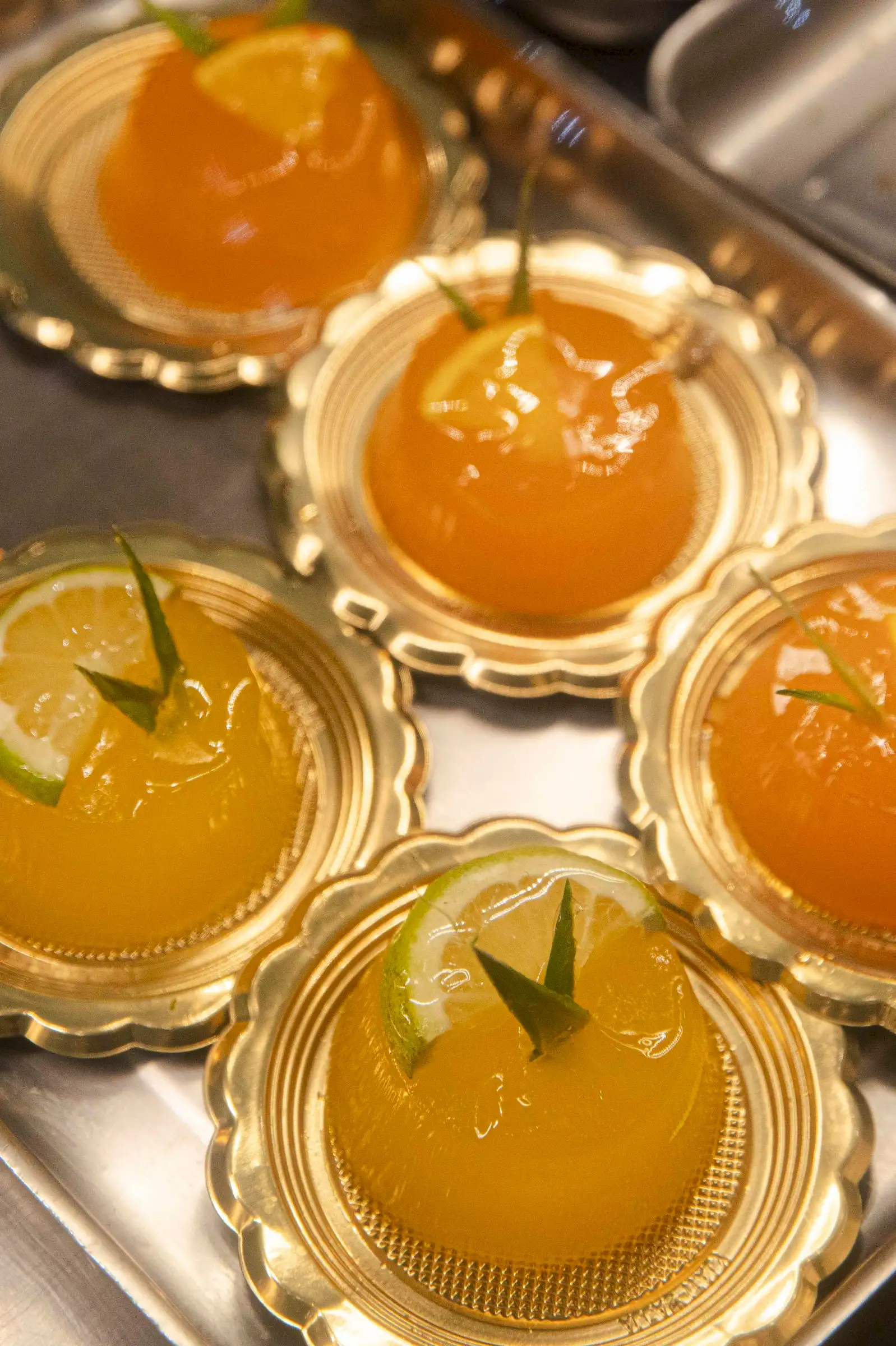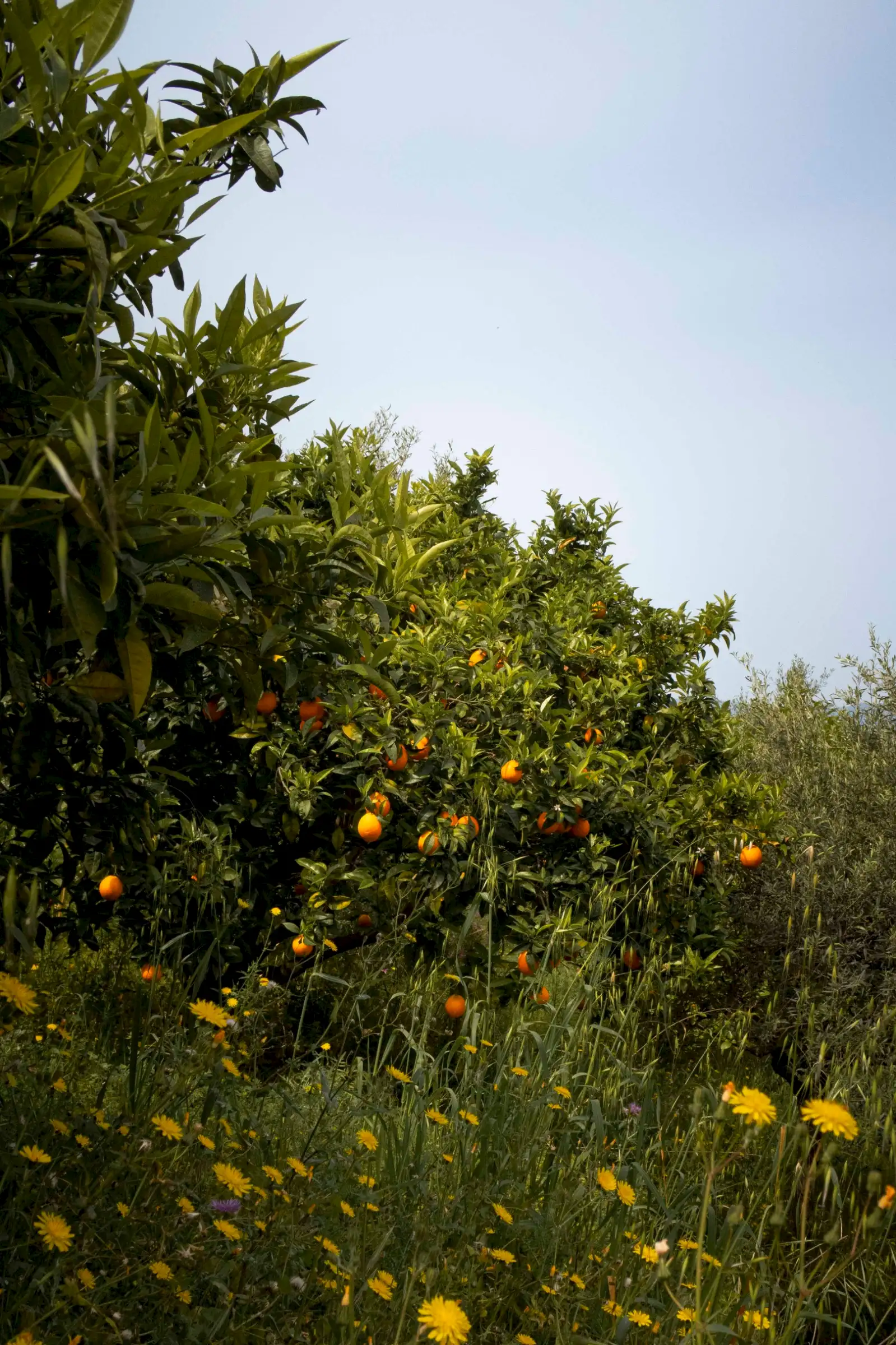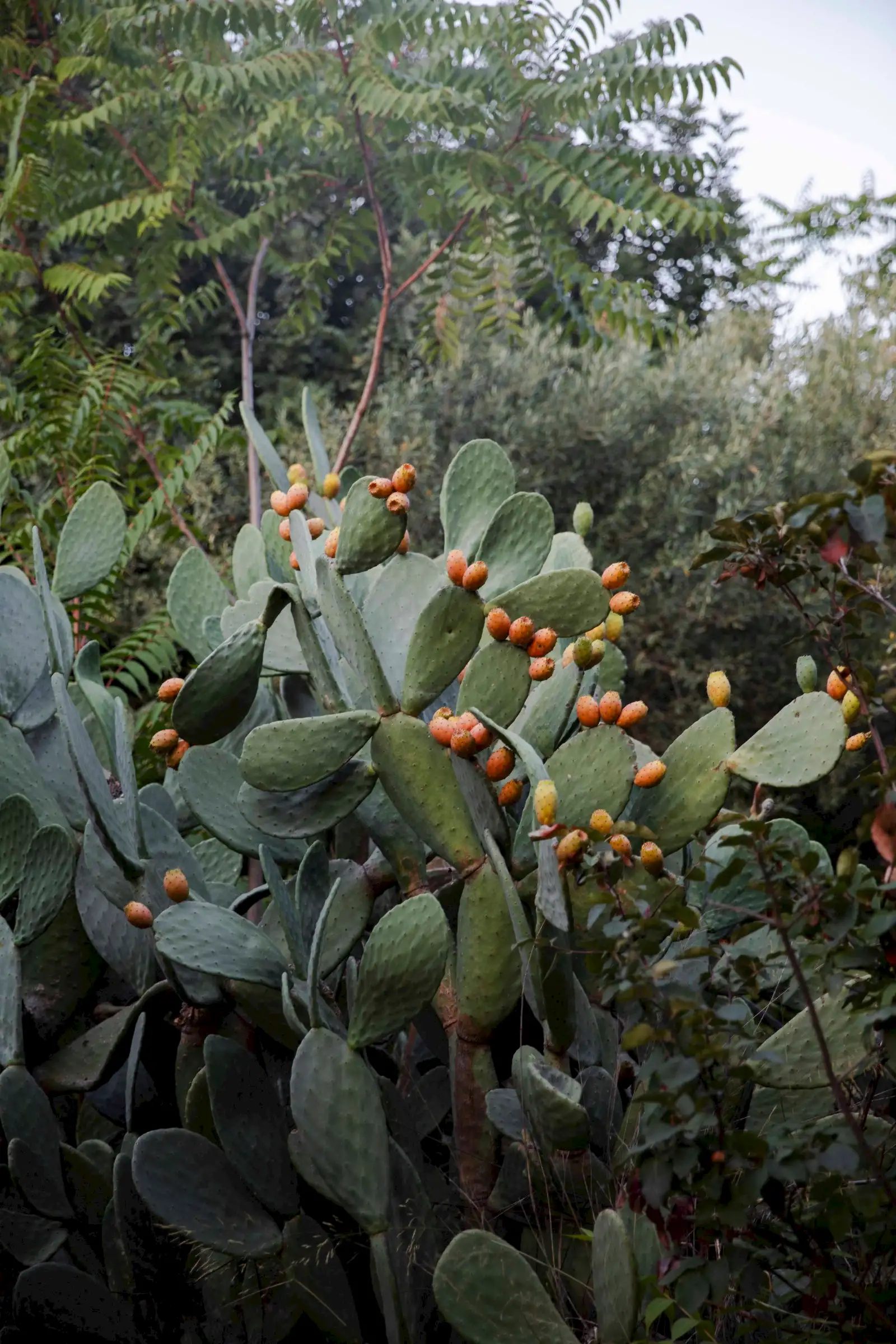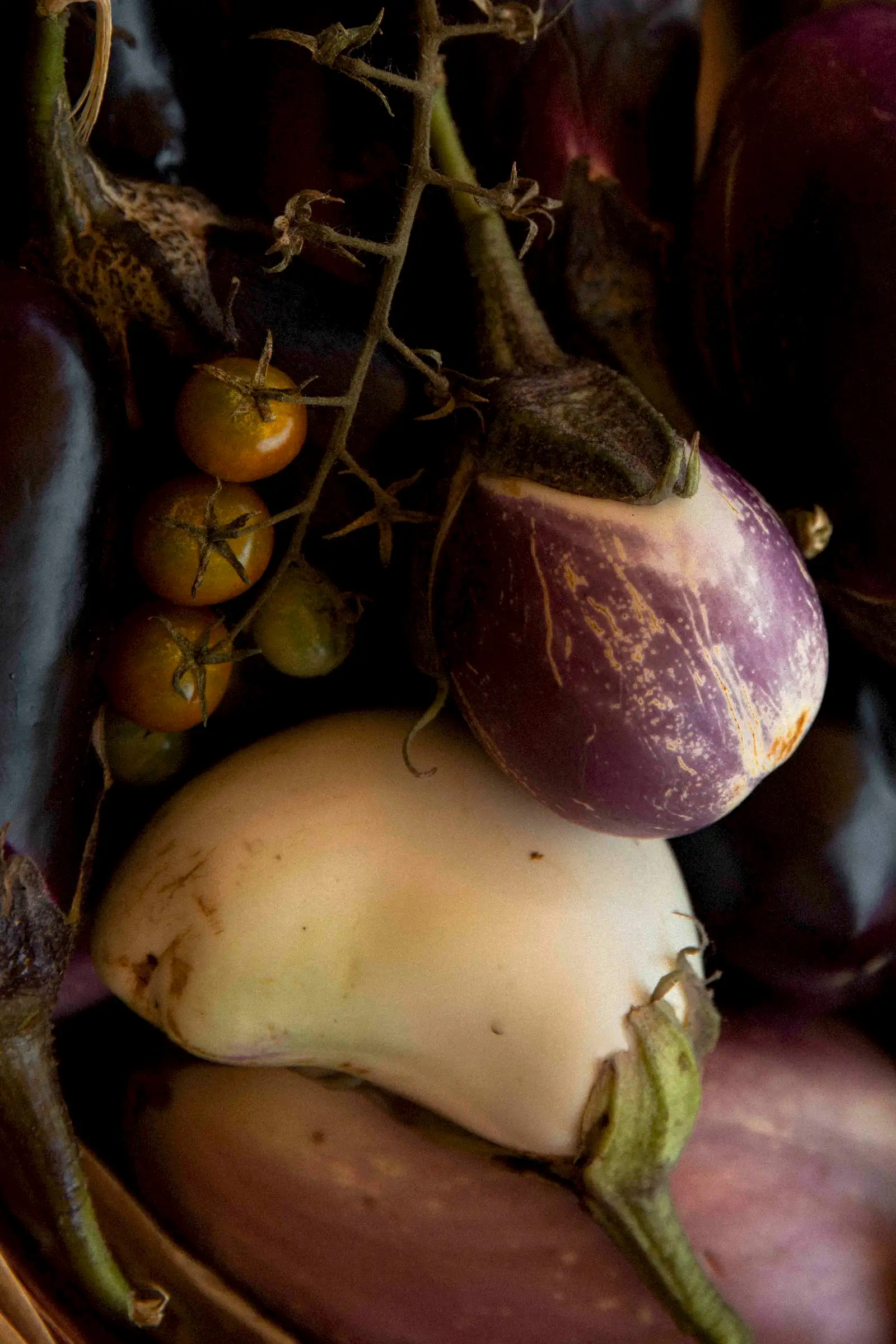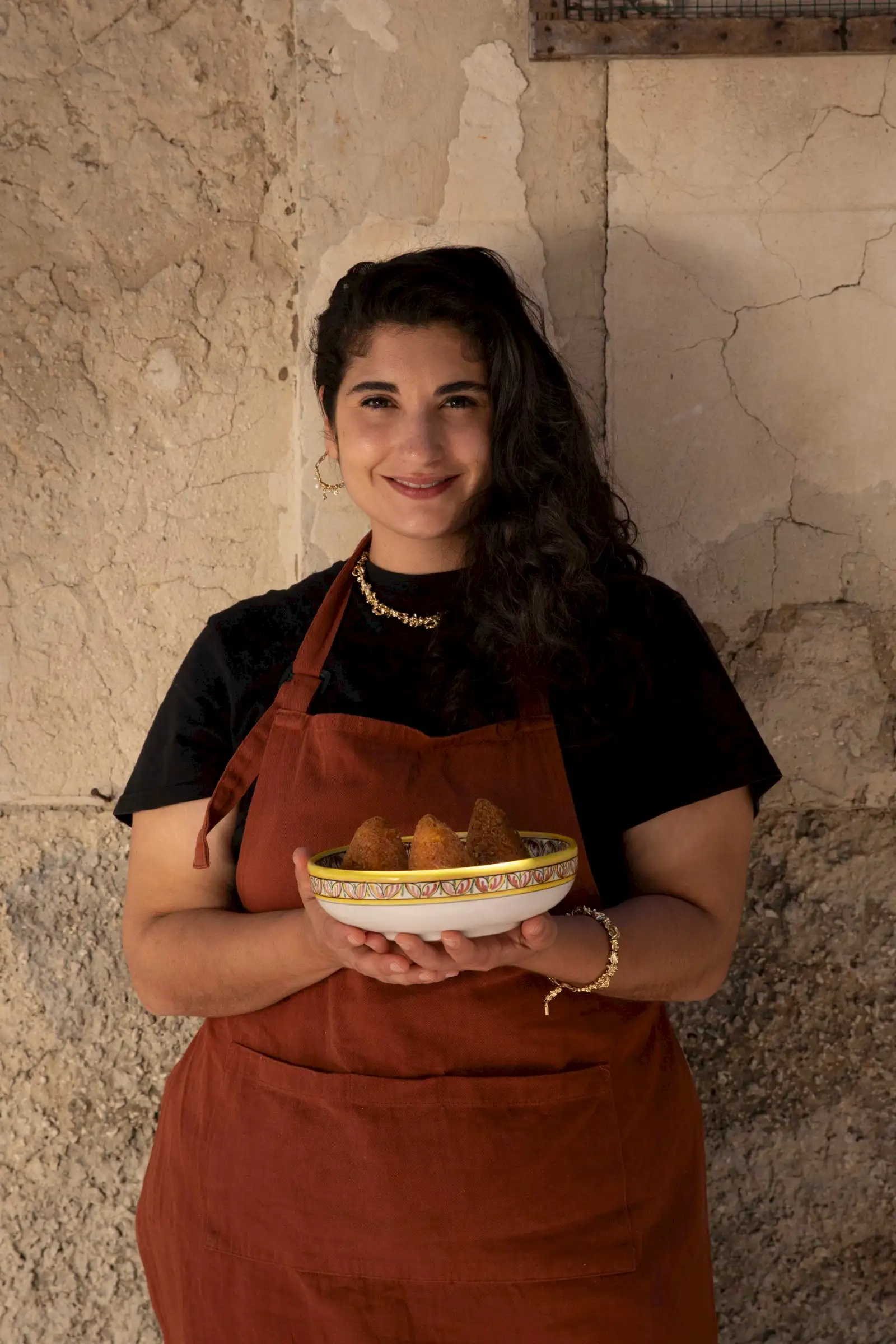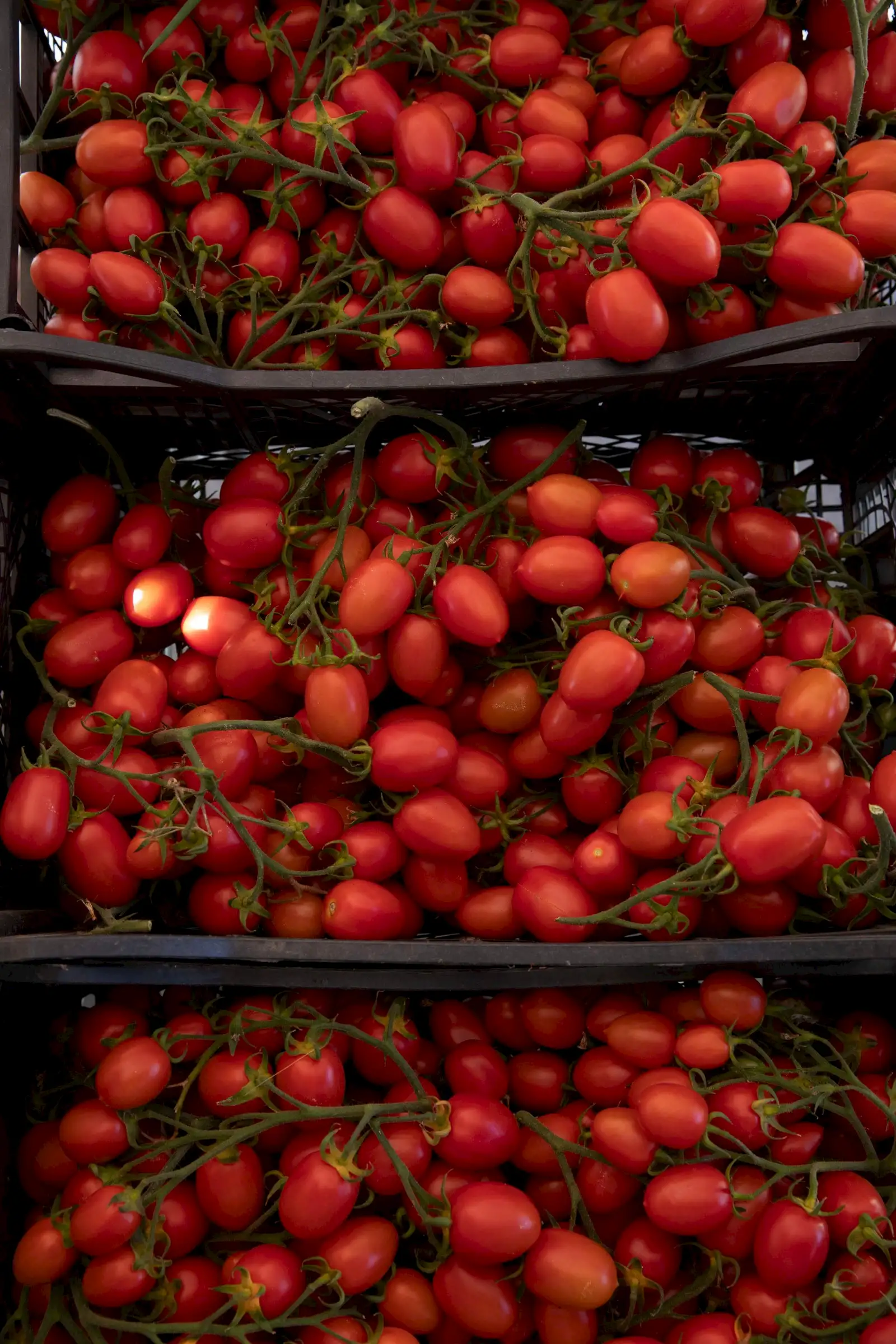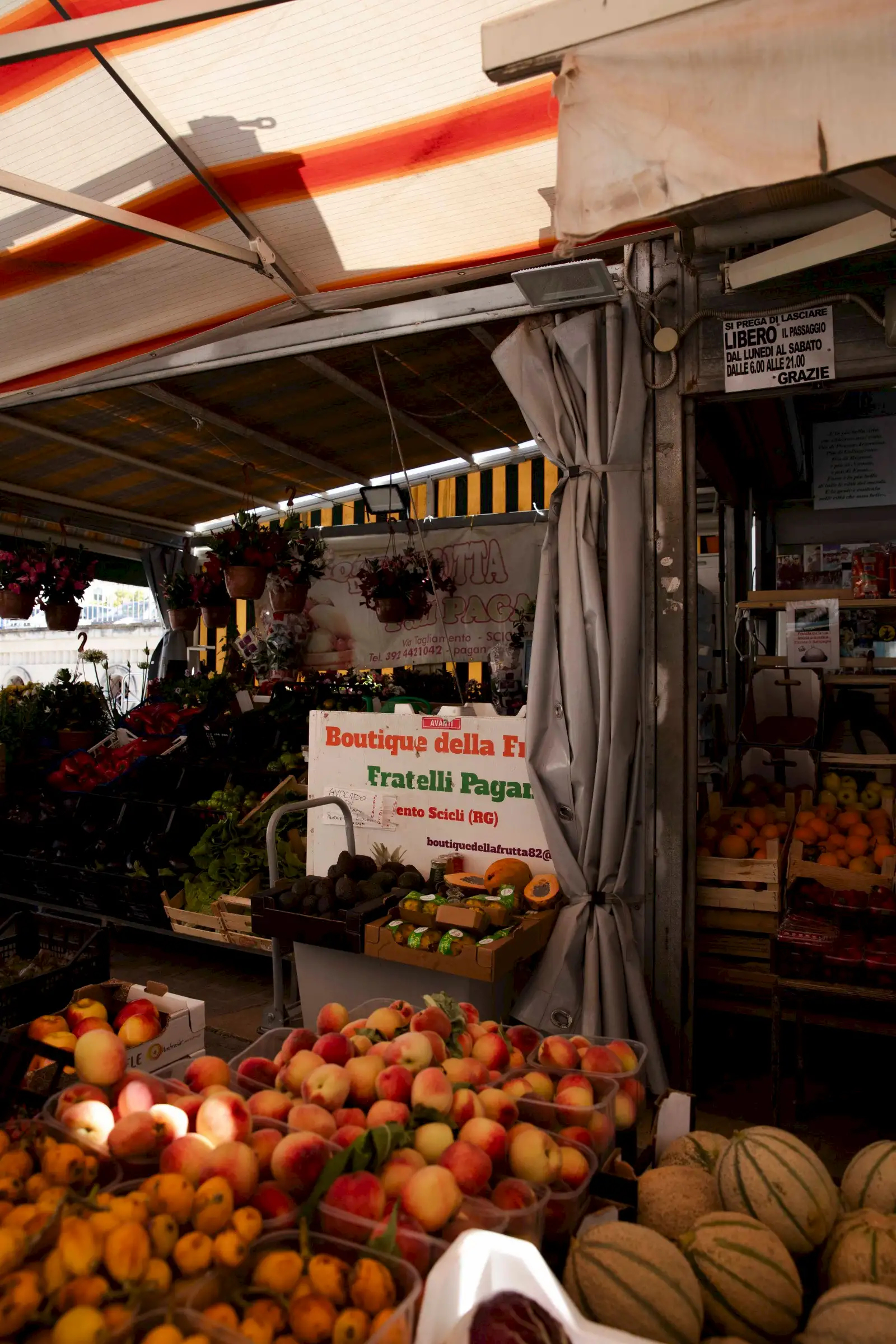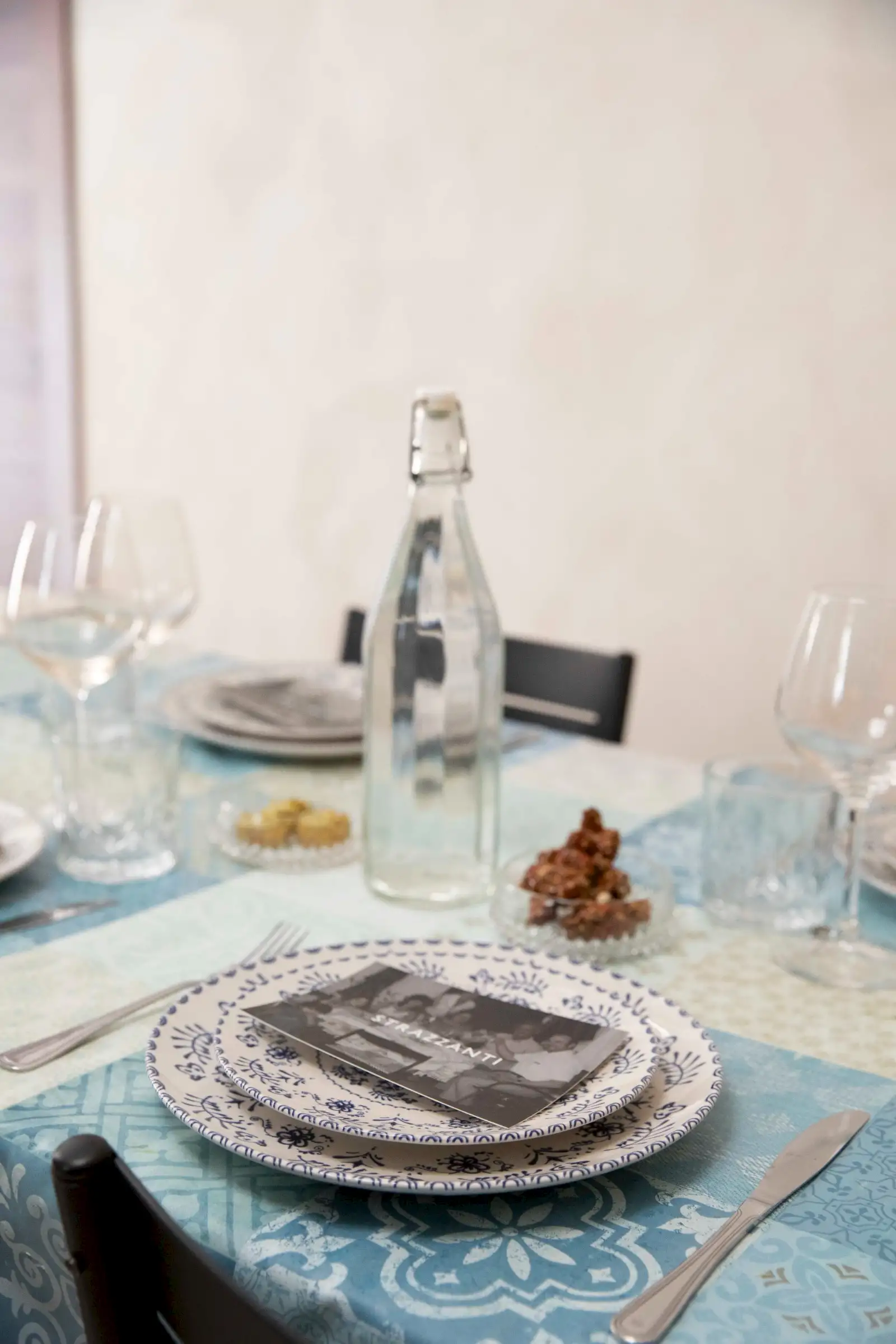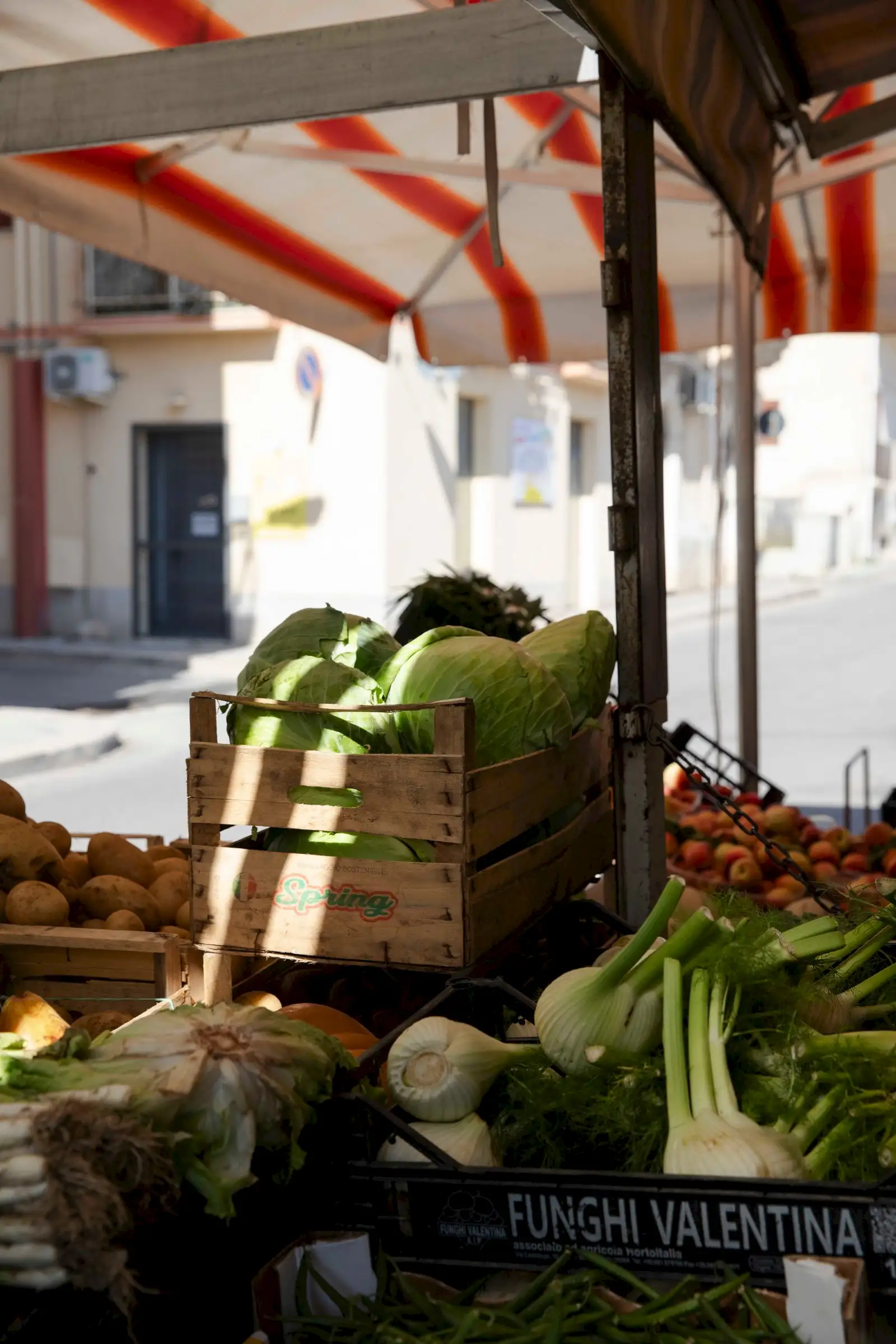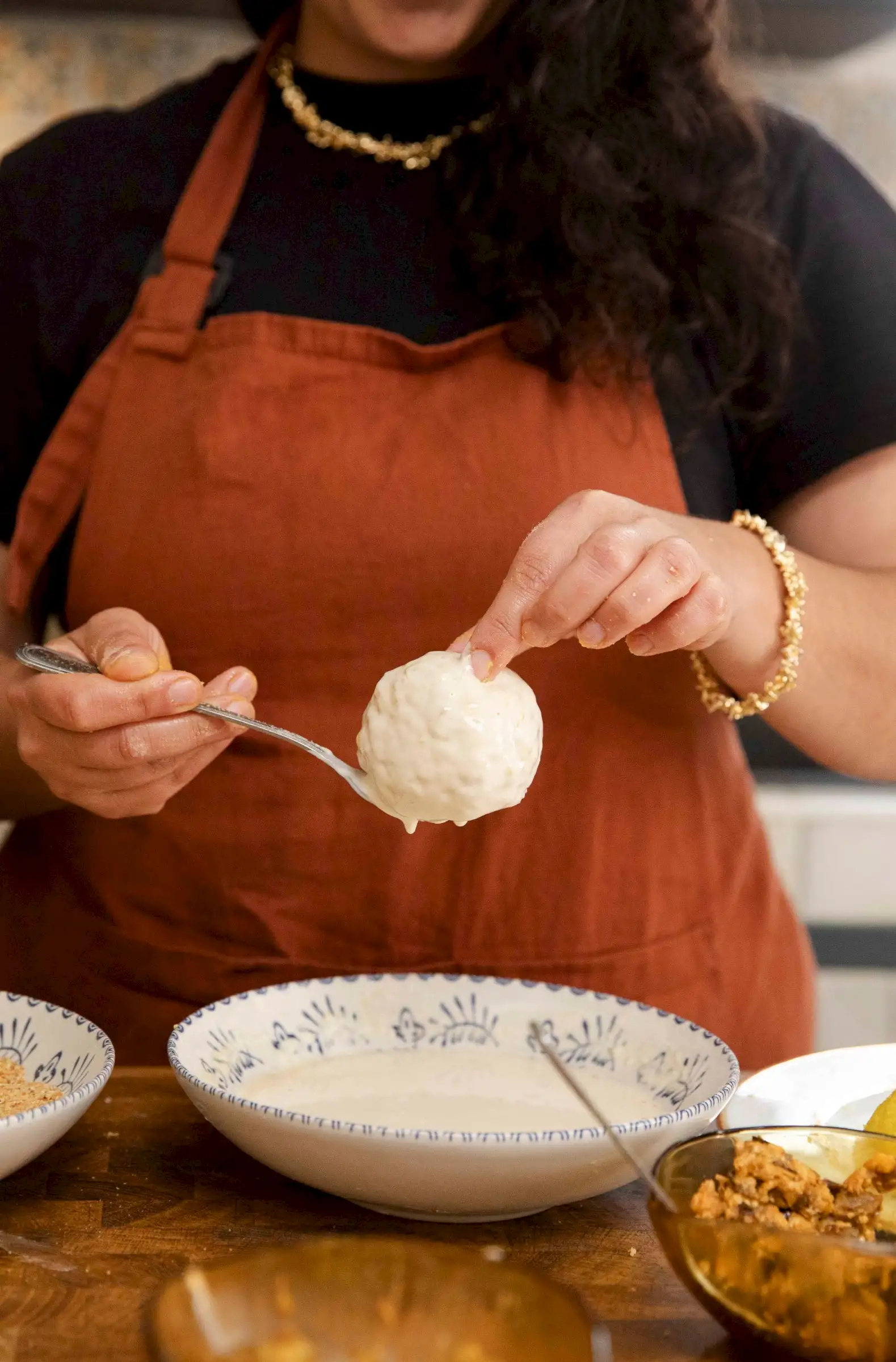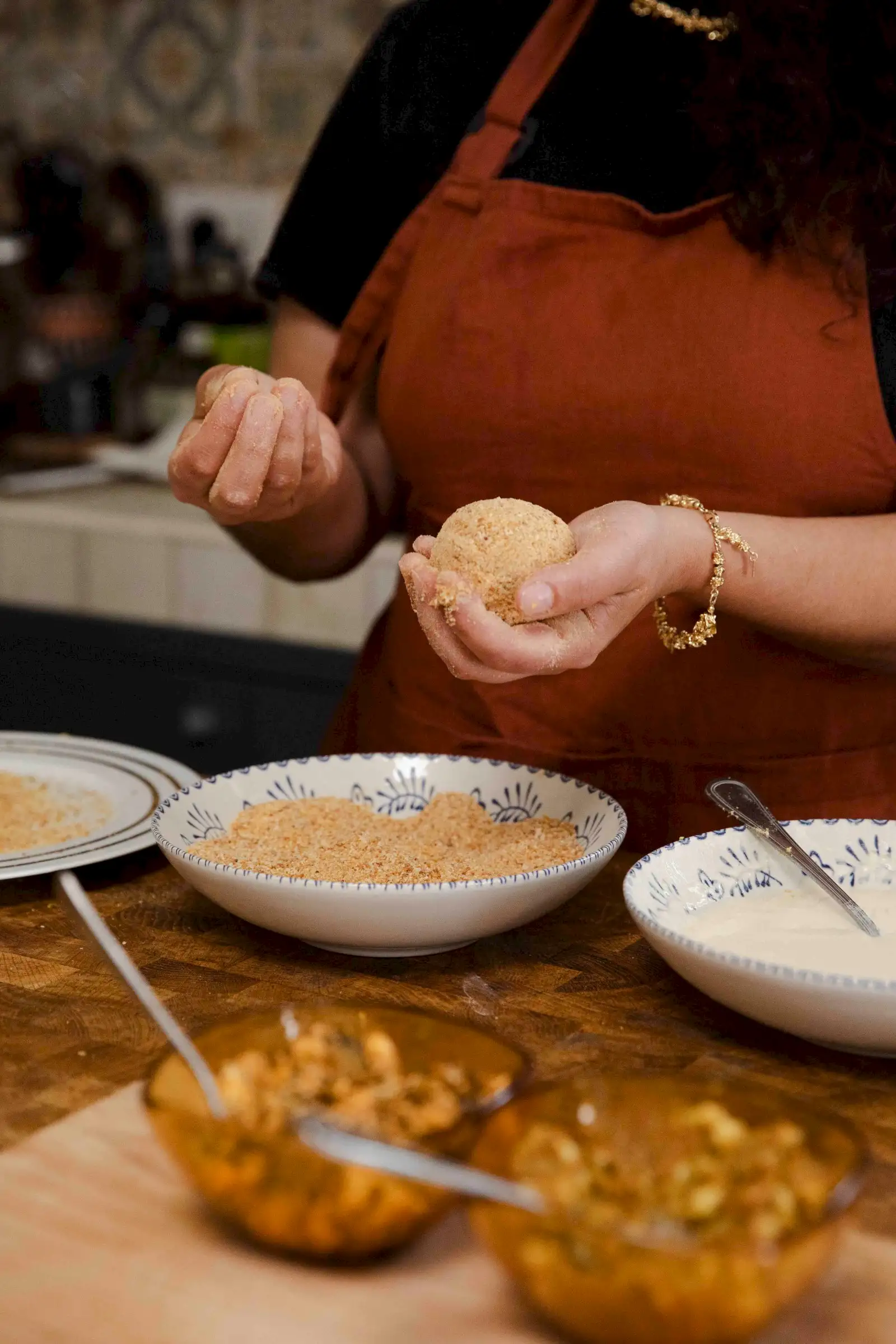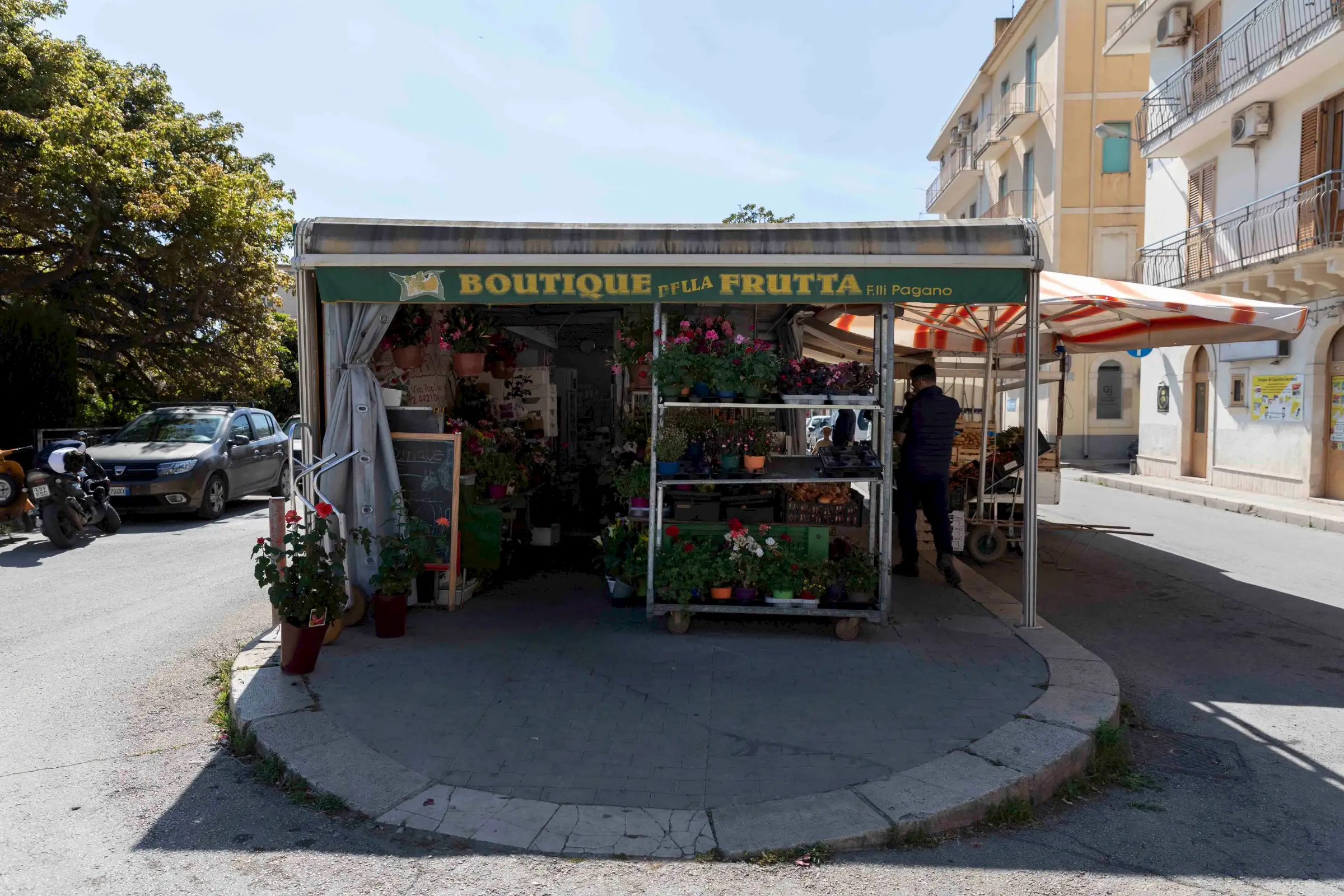Written by Mara Giamboi
photography by Yeelen Tavilla
modified 5 September 2025
6 min. read
How Sicilian food tells the story of heritage and cultural influences
Rich and diverse, Sicilian food culture tells stories of migration, tradition and family, woven into every dish on the table. We spoke with chef Emilia Strazzanti about what makes Sicilian food so unique - from seasonal produce to the family tables where it all begins.
Sicily’s culinary heritage
Walk through a Sicilian market and you can feel centuries of history in the air. The scent of citrus, the bright colors of candied fruit, aroma of freshly toasted nuts; it all tells the story of an island that has always been a meeting point of cultures. Greeks, Normans, Spaniards - they all left their mark on the island.
Among the many influences, the Arab presence left one of the most lasting marks on Sicily’s cuisine.
They brought irrigation that turned dry soil into citrus groves, and with them came almonds, pistachios, cinnamon, and rice. Those flavors still define Sicily today. You can taste them in the crisp bite of a cannolo, a golden pastry shell filled with sweet
ricotta cream, or in a slice of sfincione, a savory Sicilian focaccia layered with tomato, onions, and cheese.
It’s the blend of sweet and savory, the spice and freshness that makes Sicilian food so special. Every meal celebrates the island’s rich culinary heritage and the centuries of cultures that came together to create it.
Land, sea and seasonal flavors
Sicily’s connection to land and sea shines through in its seasonal ingredients: fresh vegetables, citrus, eggplants, fish and seafood, rich olive oil, and fragrant herbs all come together in its vibrant cuisine. Even with year-round cultivation, traditional seasonal flavors remain unmatched. Think of prickly pears, Fichi d’India in Italian, ripening in summer, artichokes blooming in spring, or Sicilian pistachios adding their unique flavor in autumn.
Signature local ingredients like extra virgin olive oil, aromatic herbs such as wild fennel and mint, and treasures like pine nuts and pistachios make every dish burst with flavor.
These ingredients form the foundation of Sicily’s slow-cooked sauces and classic fish dishes: from simmering tomato sauce and preserving vegetables for year-round use to preparing classic fish dishes like involtini di pesce - tender rolls of fish filled with herbs, breadcrumbs, and sometimes nuts or cheese.
And across the island, many iconic dishes, like panelle - chickpea fritters from Palermo - originated from limited resources. Although the use of ingredients may vary by region, season, or generation, the essence of a Sicilian dish always remains captivating.
Cooking as a way to connect
These vibrant ingredients come alive through family recipes and cherished traditions. Here, cooking isn’t just something you learn from a book - it’s learned by doing, often in the heart of the family kitchen. Recipes and techniques are passed down from generation to generation, turning cooking into a cherished family tradition.
Beloved habits like making pasta sauce, preserving seasonal vegetables such as tomatoes or eggplants, and gathering around the table are true cultural rituals in Sicily. Whether it’s a family lunch on Sunday or an aperitivo with friends, Sicilians see food as more than just eating - it’s a way to connect with the people around them.
In Sicily, meals are shaped by generations of practice and shared around tables that bring people together.
Sicilian cooking with Emilia Strazzanti
To explore the rich food traditions of Sicily, we visited chef Emilia Strazzanti. Born in the UK to Sicilian and Neapolitan parents, Emilia carries the rich culinary heritage of her grandparents into everything she cooks. Through the food experiences she hosts, Emilia invites others to immerse themselves in the vibrant flavors, traditions, and stories of local cuisine.
"After years of working in London, where I ran a Sicilian bakery and supper club, I decided to move to Sicily, which has always felt like home to me. After the pandemic, I started Strazzanti Experiences in memory of my grandparents, as a way to never forget their recipes. I can’t go back to those moments of us all sitting together, so I recreate that feeling by cooking with the ingredients they taught me to use."
Heritage in parcels
"My grandfather often picked me up from school and we'd go straight into the kitchen - it's how I fell in love with cooking. He taught me the basics of tomato sauce, and I soon learned to recognize by smell alone whether it needed more basil or garlic.
Parcels from Sicily and Naples brought us mozzarella, pecorino, and sun-dried tomatoes, while Saturdays were spent preserving tomatoes with basil. The kitchen was always alive with voices - what outsiders might hear as arguments was, for us, simply the way traditions were passed on.
These moments shaped my love for Sicilian cooking and continue to inspire how I cook today."
Bringing people together
"What I find special about Sicilian food culture is how everyone comes together at the table. Bringing people together, sharing food, and creating memories - whether cooking or sitting down - is what I love most. A perfect example of this is the Sicilian grigliata, where friends and family gather outdoors to enjoy fish and meat, sharing stories and laughter while sipping wine or beer.
I feel it's really up to our generation to keep these traditions alive. If we keep cooking this way and sharing the stories behind our dishes, then they’ll never be lost."
Abundance of vegetables
"I get frustrated when people come to Sicily and only eat pizza and pasta - we have an abundance of beautiful vegetables here. And while climate change is bringing new tropical fruits to our markets, nothing compares to the deep flavor of a Sicilian tomato in August.
What's fascinating about Sicilian cooking is its adaptability - dishes like caponata started with capone fish, but when that wasn’t available, eggplant took its place. That's how food develops here, it's about using what we have."
Rice and saffron
To see these ingredients and traditions come alive, Emilia invited us into her kitchen, where she made arancini for us.
"I still remember the first time I made them with my grandma and aunt. They worked quickly, chatting away, while I stood there thinking, 'Wait, slow down!'. People often say arancini comes from leftover risotto, but it actually came from the Arabs, who brought rice and saffron to Sicily. When refrigeration wasn't common, rice balls became travel food, filled with whatever ingredients were available and coated in breadcrumbs. Even their shapes tell a story: cones from Catania evoke Mount Etna, while the round ones from Palermo hint at local tradition."
Emilia prepared two types for us: arancini alla norma, and arancini al pistacchio e mozzarella - the pistachio one representing Sicily's Arabic culinary influences. Next to the arancini, Emilia also prepared some traditional sweets for us, like cubbaita with almonds and sesame, and her signature pistachio and almond cake - a nod again to the Arab influence on Sicilian desserts.
From arancini to sweets, Sicilian food takes you on a journey through the island's history, culture, and family traditions. Whether you're cooking at home or savoring it in Sicily, each bite tells a story.
Want to know more? Visit: https://www.strazzantisicilyexperiences.com/
Discover authentic Sicily
Plan your Sicilian escape today by browsing our stunning villas, where you can relax and soak up the island's charm.
Mara Giamboi & Yeelen Tavilla
Mara Giamboi and Yeelen Tavilla are two Dutch-Sicilian creatives who combine their talents to celebrate Sicilian culture through food and visual storytelling. Mara, a (culinary) writer, recipe developer and food stylist, and Yeelen, a photographer and allround creative, both draw deeply from their shared Sicilian roots.
